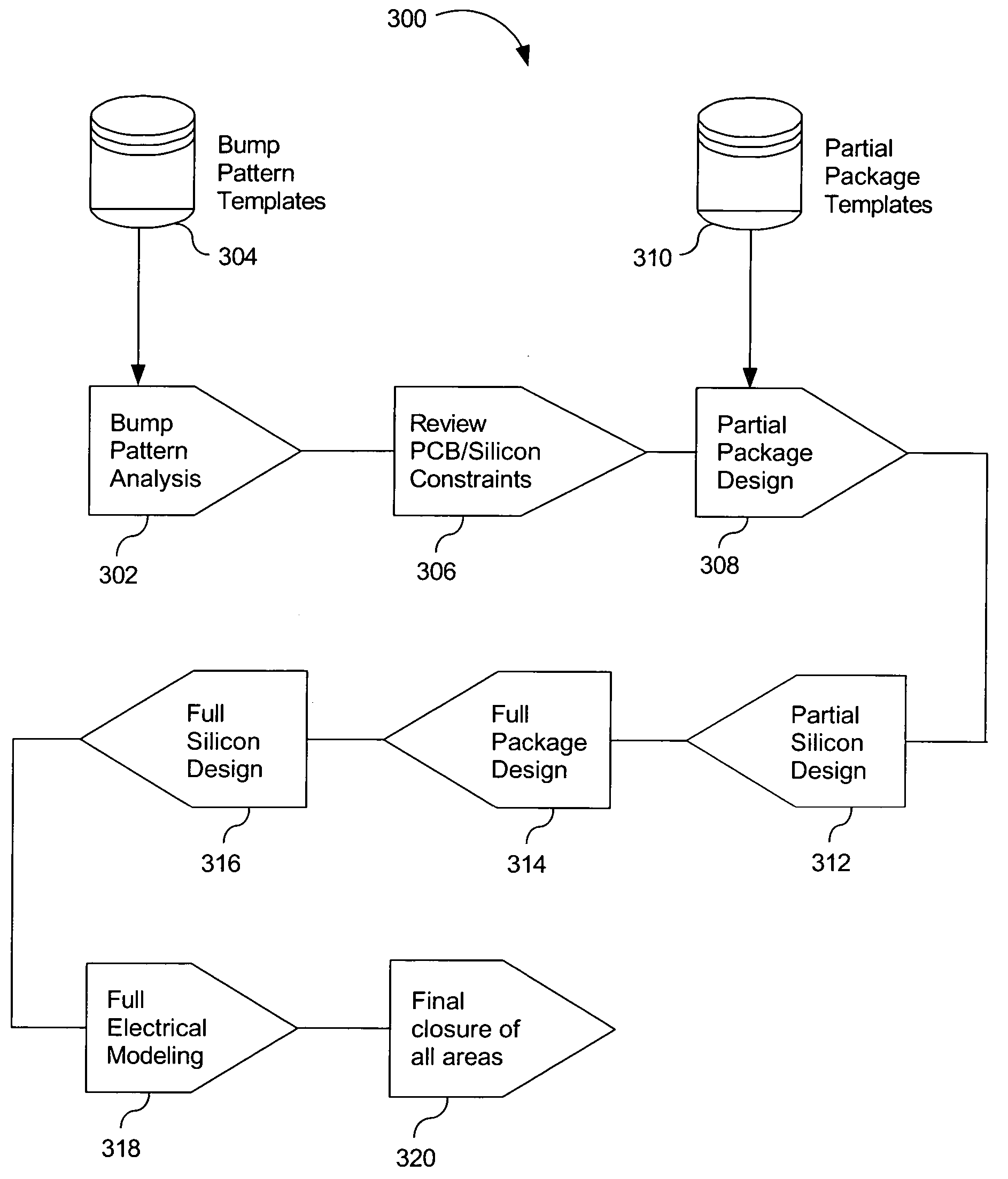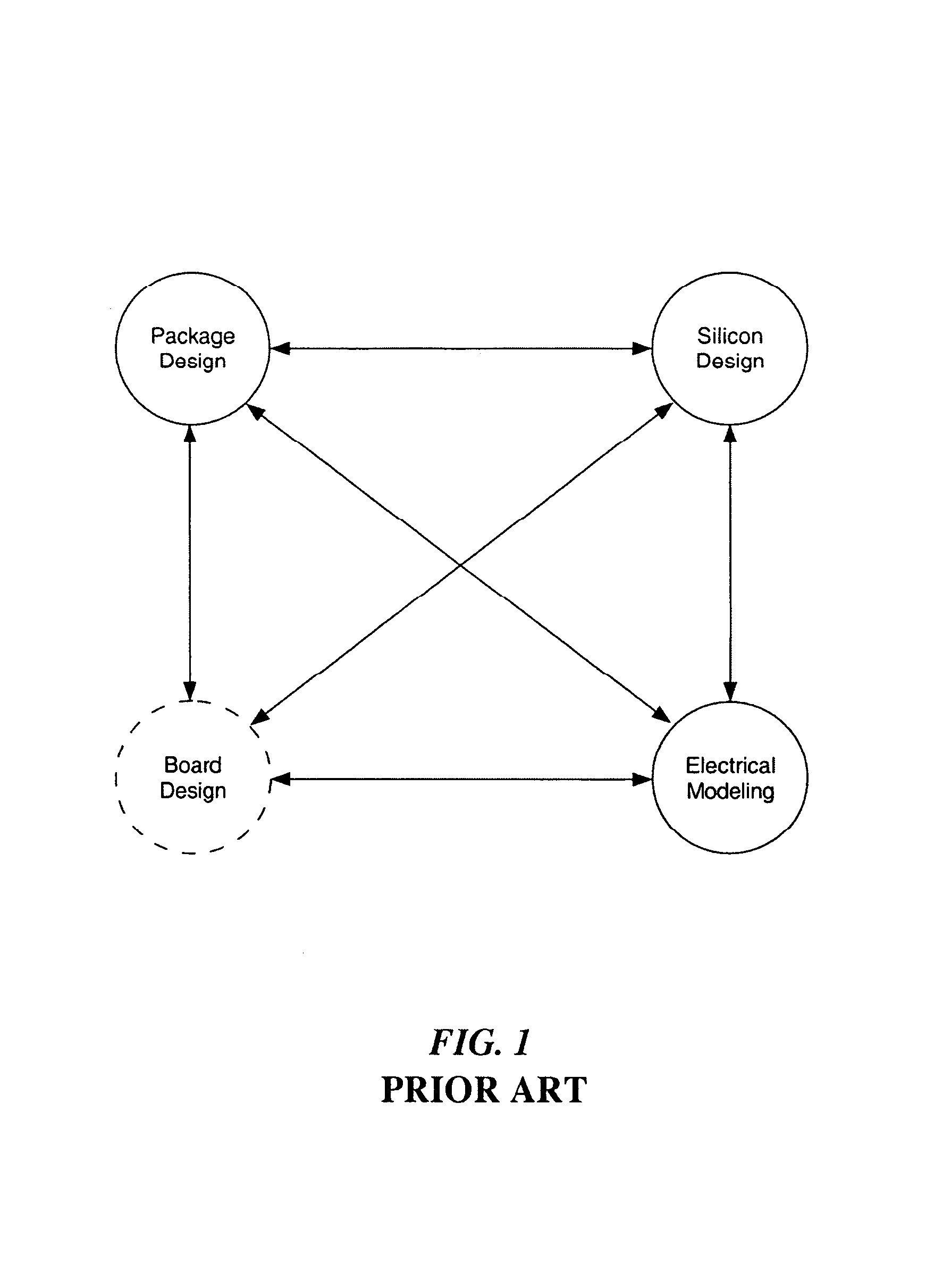Methods for optimizing package and silicon co-design of integrated circuit
a technology of integrated circuits and optimization methods, applied in the field of integrated circuits, can solve the problems of high detailed studies and extensive development schedules, no fixed or exact sequence of effort in silicon design, package design, board design, electrical modeling, etc., and achieve the effect of efficient development cycles for both silicon and package components
- Summary
- Abstract
- Description
- Claims
- Application Information
AI Technical Summary
Benefits of technology
Problems solved by technology
Method used
Image
Examples
Embodiment Construction
[0024]Reference will now be made in detail to the presently preferred embodiments of the invention, examples of which are illustrated in the accompanying drawings.
[0025]The present invention provides new methods for silicon and package co-design. Traditional approaches introduce highly iterative steps between silicon, package, and board design, and electrical modeling. These approaches prove to be costly from several aspects including automation and engineering effort. The present approach may eliminate iteration by creating bump and package templates, which can be quickly assembled for a specific design scenario by manual or automation methods. These templates are pre-designed and characterized building blocks for specific portions of a die or IP (Intellectual Property) interface. The present approach may remove the need for iteration and reduce cycle times.
[0026]According to the present invention, two template libraries are present. One library includes bump pattern templates, and...
PUM
 Login to View More
Login to View More Abstract
Description
Claims
Application Information
 Login to View More
Login to View More - R&D
- Intellectual Property
- Life Sciences
- Materials
- Tech Scout
- Unparalleled Data Quality
- Higher Quality Content
- 60% Fewer Hallucinations
Browse by: Latest US Patents, China's latest patents, Technical Efficacy Thesaurus, Application Domain, Technology Topic, Popular Technical Reports.
© 2025 PatSnap. All rights reserved.Legal|Privacy policy|Modern Slavery Act Transparency Statement|Sitemap|About US| Contact US: help@patsnap.com



